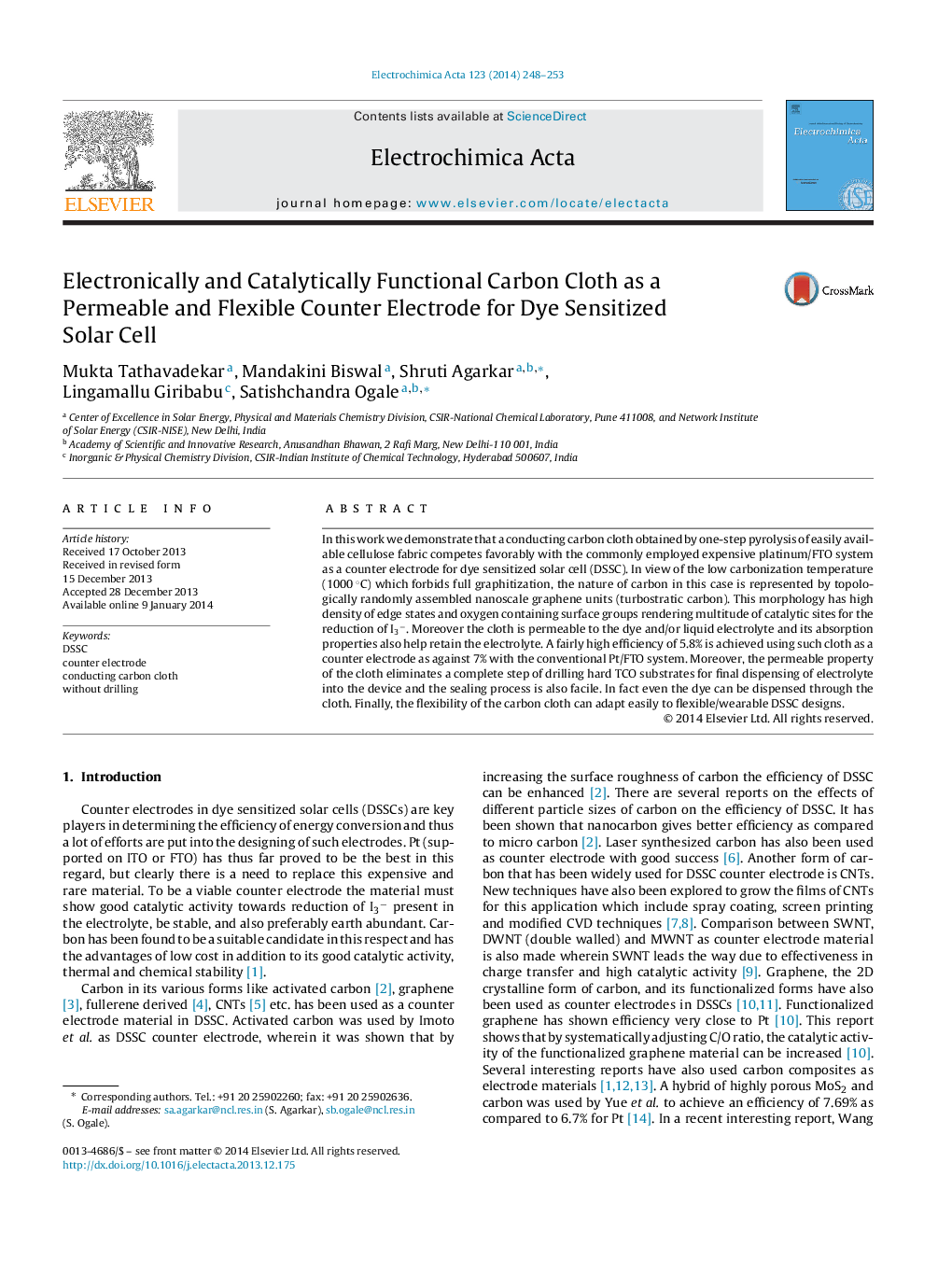| Article ID | Journal | Published Year | Pages | File Type |
|---|---|---|---|---|
| 186017 | Electrochimica Acta | 2014 | 6 Pages |
In this work we demonstrate that a conducting carbon cloth obtained by one-step pyrolysis of easily available cellulose fabric competes favorably with the commonly employed expensive platinum/FTO system as a counter electrode for dye sensitized solar cell (DSSC). In view of the low carbonization temperature (1000 °C) which forbids full graphitization, the nature of carbon in this case is represented by topologically randomly assembled nanoscale graphene units (turbostratic carbon). This morphology has high density of edge states and oxygen containing surface groups rendering multitude of catalytic sites for the reduction of I3−. Moreover the cloth is permeable to the dye and/or liquid electrolyte and its absorption properties also help retain the electrolyte. A fairly high efficiency of 5.8% is achieved using such cloth as a counter electrode as against 7% with the conventional Pt/FTO system. Moreover, the permeable property of the cloth eliminates a complete step of drilling hard TCO substrates for final dispensing of electrolyte into the device and the sealing process is also facile. In fact even the dye can be dispensed through the cloth. Finally, the flexibility of the carbon cloth can adapt easily to flexible/wearable DSSC designs.
Graphical abstractFigure optionsDownload full-size imageDownload as PowerPoint slide
